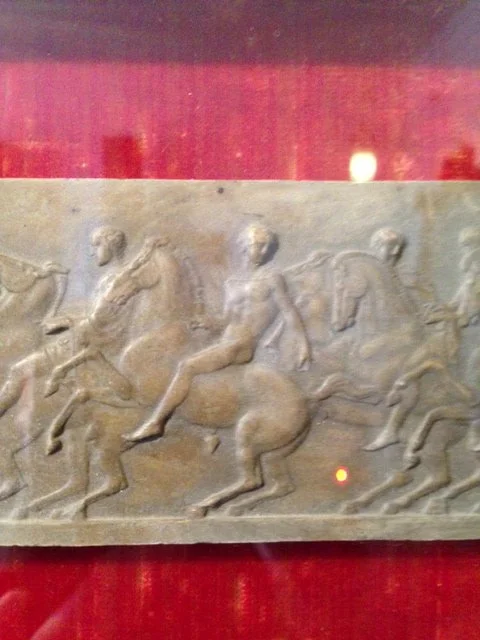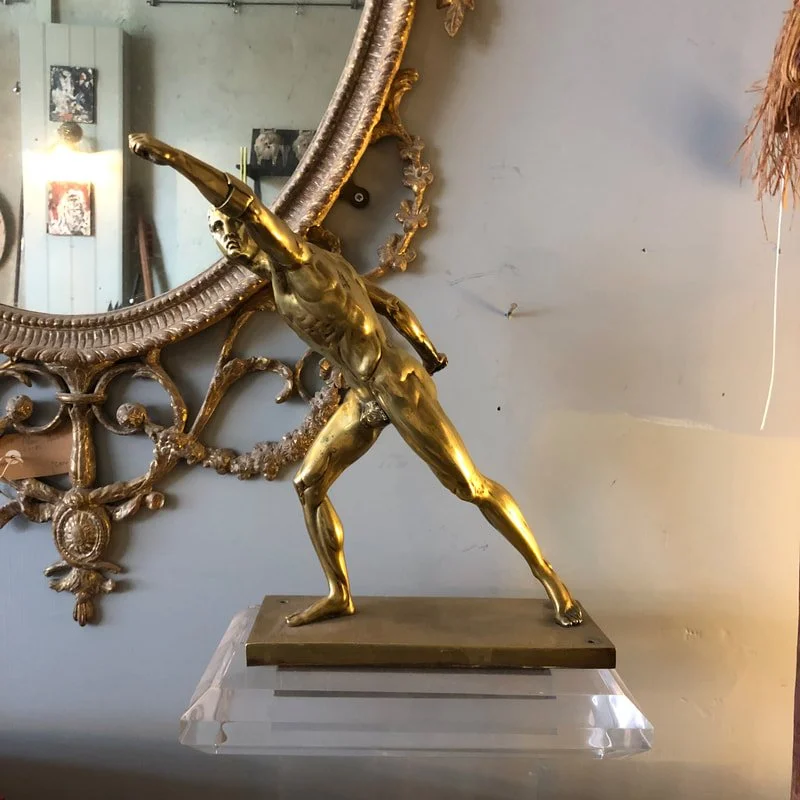As a youth, Flaxman worked in his father’s plaster-casting studio in London while studying Classical literature, which was to be a continual source of inspiration. In 1770 he entered the Royal Academy schools. After 1775 he began to work for the potter Josiah Wedgwood. The discipline of producing designs, usually based on antique models and executed in wax, which could be translated into the silhouette technique of Wedgwood’s jasperware, strengthened Flaxman’s innate feeling for line. His design of the Apotheosis of Homer (1778) relief was adapted from an ancient Greek vase for use on pots, chimneypieces, and plaques. It has rarely been out of production since it was executed. Flaxman also designed profile portraits in antique style for execution as jasperware medallions. While at the academy he formed a lifelong friendship with William Blake, who stimulated his interest in medieval art.
n 1787 he went to Rome to continue his study of the antique. Intending to stay only two years, he obtained enough commissions to remain until 1794. His artistic creed was formed in these years. He drew assiduously, not only from the antique but also from Italian medieval and Renaissance art, and was determined to give his work a moral purpose. He produced ambitious academic groups such as The Fury of Athamas (1790–94) and Cephalus and Aurora (1790), but his book illustrations had far greater importance. His Iliad and Odyssey (1793), Aeschylus (1795), and Dante’s Divine Comedy (1802) soon became widely known and, with their clean linear rhythms, contributed much to the spread of Neoclassicism in England. Later in life he designed a Hesiod, engraved by William Blake in 1817.
Chariot $600
Horses, Bulls $400



Bronze Gladiator, 19th century
Bronze figure of a gladiator, 19th century. Many examples after antique prototypes, typically cast in bronze with a brown-to-patinated surface. Common pose: sword held low in the right hand and a shield held to the left; musculature and armor rendered in academic, neoclassical style. Sizes range from small statuettes to larger mantel or garden-scale bronzes. Provenance and casts vary — many are 19th-century reproductions inspired by ancient Roman and Hellenistic models rather than excavated antiquities.
lovey scale bonze 14'' high
$1,950
Hermes: Olympian God
Hermes, one of the twelve Olympian gods of ancient Greek mythology, embodies swiftness, wit, and skill in communication. Son of Zeus and the mountain nymph Maia, he is frequently depicted as the fleet-footed messenger of the gods, bridging the divine and mortal worlds.
alabaster
$2,400


